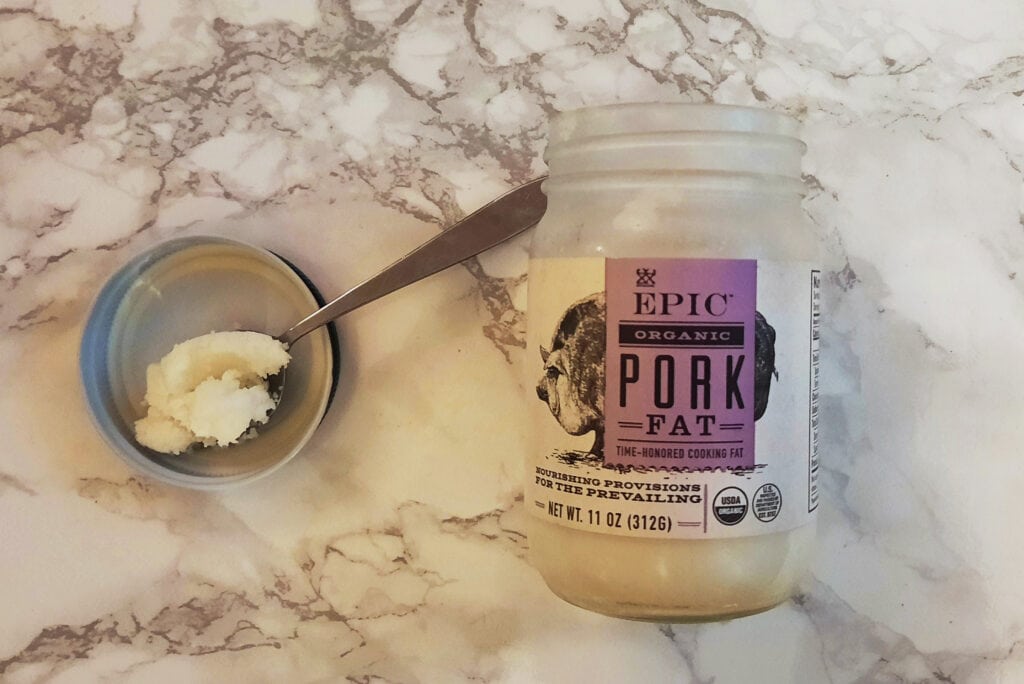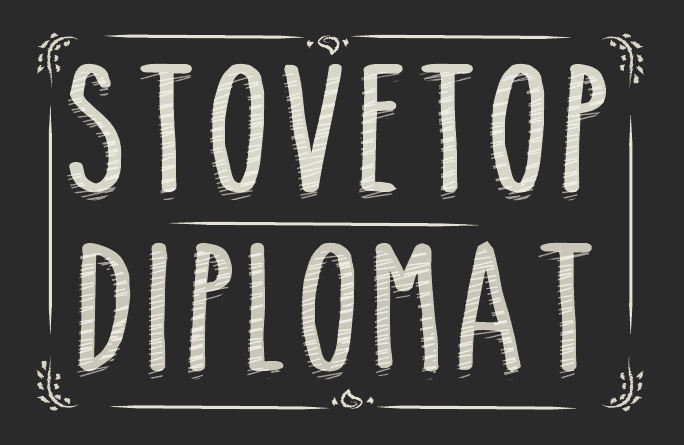What is lard and why should I use it?
Lard is pig fat that has been rendered, a process that distills all the crap out of the fat and leaves you with a final product that is perfect for frying and baking (it’s the source of that perfect flaky pie crust!). It is responsible for fried batters and crusts that are shatteringly crispy. As a cooking fat, it distributes heat evenly and has a very high smoke point which is ideal for frying. And as it turns out, it’s not as unhealthy as once thought. But more on that below.
Can I substitute bacon grease for lard?
Lard is not the same as bacon grease. While both are pig fat, bacon grease is the result of cooked belly fat from pork that has been cured and treated. Bacon grease is a super dope frying mechanism, and makes many things delicious, but is too salty, too smokey, and too flavor-packed to act as a substitution for lard. Lard is much more neutral in flavor.
How unhealthy is lard?
Starting sometime in the 80s or 90s, lard got a really hard PR break. I’m not going to sit here and argue that it’s a health food, but animal fats have far more benefits than perhaps initially realized. Some examples:
- Lard is chock full of monounsaturated fats, which are considered “heart healthy”– they don’t increase your risk of heart disease and indeed may even raise “good” cholesterol levels
- Although it is made up of about 40% saturated fats, the once-widely-believed connection between saturated fats and heart disease has been repeatedly disproved
- The monounsaturated fat in pig fat is oleic acid, the same type of fat found in olive oil. Oleic acid reduces inflammation, risk of coronary heart disease, and may aid memory
Here’s the less good:
- Lard doesn’t contain any antioxidants, unlike some other oils (such as extra virgin olive oil and coconut)
- Lard has no polyunsaturated fat, commonly found in fish and oils such as flaxseed and safflower.
Polyunsaturated fats are rich in Omega-3’s and are even more beneficial to your health than saturated fat
The bottom line? Lard ends up somewhere in the middle in terms of healthfulness of cooking fats. It’s certainly better for you than hydrogenated oils (trans fats) but not as great as antioxidant rich oils such as olive or coconut.
Where can I find lard?
As with so much of the bizarre food landscape we live in, the quality of lard varies to a shocking degree. If you find “lard” on the grocery shelves check the packaging thoroughly. If the word “hydrogenated” is on it anywhere, you’re looking at a canister of trans fats, and you may as well be buying Crisco. If there’s a fat to avoid, trans fats are the one. Trans fats simultaneously lower your “good” cholesterol and raise your “bad” cholesterol. It also increases your risk of heart attack, stroke and Type 2 diabetes. As of this writing, the lard primarily available in major grocery stores and big box outlets is hydrogenated.
Fortunately, lard is starting to make its way back to the shelves of many health food stores. For instance, here in Colorado I can find it at Sprouts, Natural Grocers, and Whole Foods. Usually it lives on the shelf near the olive oil and other cooking oils. If you have a quality meat market in your area, that’s a good bet as well. I’ve also had luck at Spanish markets and mercados. My personal favorite is Epic Brand, below. It’s worth the extra money for how exceptionally delicious it makes everything.

